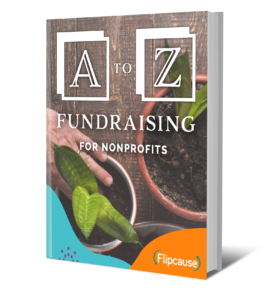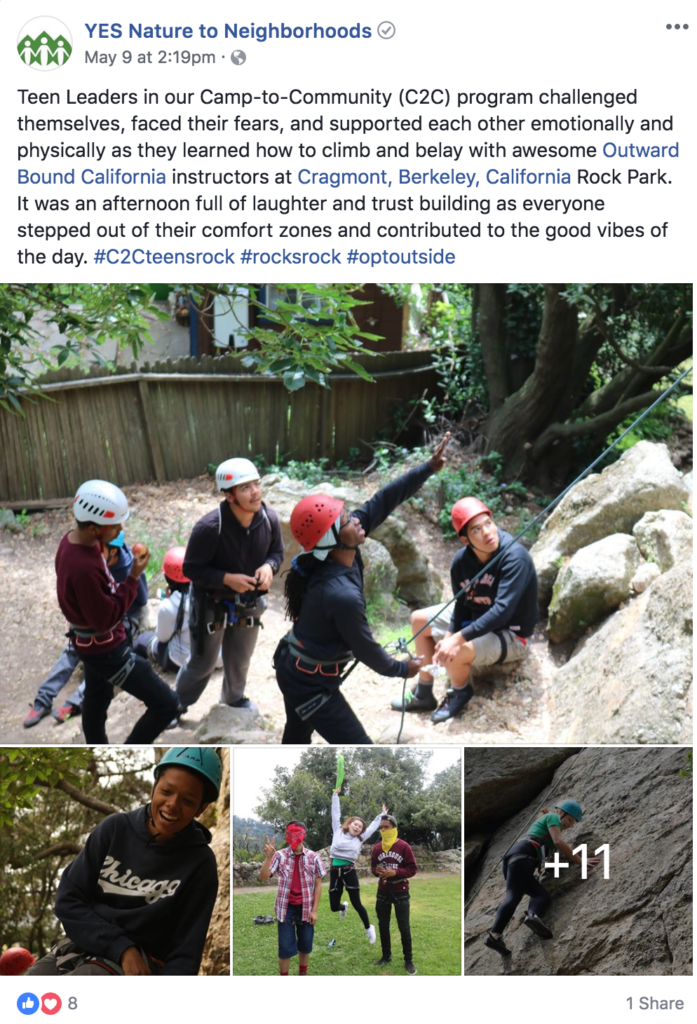Sharing Stories from Your Community
The Importance of Nonprofit Storytelling
Storytelling is what connects and brings us together. As a nonprofit, sharing stories from your community is key to building strong emotional connections and relationships with your supporters.
Your community is made up of amazing people, from the individuals and families who benefit from your programs to your volunteers who dedicate their time to advancing your cause. There are also your staff and board members who make it their personal mission to make a difference. All of them have their own unique reasons for connecting with your nonprofit and personal motivations staying involved.
Taking the time to learn and share their stories can strengthen bonds within your community and inspire others to join you. Storytelling also gives you the opportunity to keep people informed about your everyday work. It’s a wonderful way to build awareness and advance your mission.
InspirE People to share their stories.
Make it a habit to ask the question: What are you excited about right now?
Nonprofit storytelling is all about your personal connections. You can find wonderful stories through conversation. Chances are that most people will feel comfortable sharing their latest bit of (work-related) good news with you! Some will be thrilled that your organization just reached a major organizational milestone. Others might be getting ready to welcome a new staff member or onboard a group of volunteers.
Keep an eye out for stories in the feedback you collect, too. Program participants and beneficiaries can be the best source for first-hand testimonials about your impact. When you hear an inspiring story, ask if you can write it down—if it hasn’t been already—and make sure to get approval from the storyteller to share it publicly.
Plan to share with your supporters.
Once you get people talking (and writing), you’ll need to have a plan in place for promoting your nonprofit’s stories. Decide in advance who will be responsible for curating and posting your content and choose a platform to share your updates in a new, visual way. Will you start doing a monthly write-up on your blog? A weekly social media update? A quarterly newsletter eblast? No matter how you choose to share your stories, plan to make it a regular thing.
If you’re worried about adding too much more work to anyone’s plate, you can also pick a theme and ask community members to share their stories and photos with you directly. Ask them to type up their stories, attach photos or a short video, and submit them to your organization via Google Forms, email, or even snail mail if you have a scanner available! Our favorite digital option is Google Forms (for those with Gmail or G Suite accounts) because it will automatically store everyone’s responses in one place and now accepts file uploads, too.
On social media, sharing also means tagging the people featured in your stories whenever possible. When you tag someone (by typing the @ symbol followed by the person or organization’s name) they will be notified when the story is posted. This will build visibility on your posts and also encourage them to share your stories with their personal networks.
So you know: Facebook pages restrict who you’re able to tag; to tag a personal profile, that person needs to already have “Liked” your page or be friends with the admin trying to tag them.
#Hashtag your stories.
To help organize your content online, come up with a hashtag for all your story posts on social media. You’ll want to use the same hashtag each time you post a story. Even if you plan to write blog updates, you can promote them on your social media profiles and include the hashtag. When someone clicks on the hashtag or searches for it, they will see a collection of all the stories relating to that particular tag.
Add photos + videos.
Nonprofit storytelling isn’t just about writing. A photo, photo album, or short video will bring the stories you share to life.
Simple stories can be transformed into shareable content by adding a photo or short video. It doesn’t have to be anything fancy – photos from a newer camera phone should work well for social media posts or your blog. And your community members may already have personal photos that you can use. Just make sure the photo(s) you choose to share alongside your story help illustrate its message for your readers in a cohesive way.
Our partners at YES Nature to Neighborhoods do a great job of sharing their community stories and bringing these elements together:
For example, in the Facebook post above, a few short sentences explain an exciting program accomplishment and its positive impact on the community. The writing is concise and uplifting—but it’s really the photos that make you curious to learn more. The elements reinforce one another and communicate a clear message about how their organization is making a difference. They’ve tagged their local partners at Outward Bound and created a hashtag to describe their program (#C2Cteensrock).
Create guidelines for your content.
Write down guidelines and share them with the people participating to help keep everyone on the same page. Make sure to include:
- How often you plan to share (Weekly? Monthly? Quarterly?)
- What kind of photos you’d like to use (professional or playful? Serious or funny? Choose a consistent tone that makes sense with your nonprofit’s public brand and audience.)
- If people will submit their own stories and captions, include a maximum length depending on the final format. Social media posts will need to be shorter (<280 characters for Twitter or up to a few sentences long for Facebook) while blog content can be up to 1,000 words for a single post.
measure STORY impact with metrics.
Keeping track of key engagement metrics over time will help you understand the impact of your storytelling. If you’re creating blog content, you can track the # of visitors and the time spent on your blog. If you’re posting on social media, watch to see if your stories increase the number of page likes, followers, and overall engagement on your pages. These metrics will help you know if you’re reaching goals, like building awareness and engagement.
When Sharing Stories, Keep these tips in mind:
- Set clear goals: know why you’re sharing stories from your community and define how the effort will advance your mission and goals.
- Stay flexible: you’ll learn more over time about works and what doesn’t work when it comes to storytelling in your community. Stay open to new formats and ideas, as long as they still help advance your main goal.
- Ask if your stories pass the “so-what” test: imagine what your audience will do when they see your story in their feed. Will they be interested in what it’s about, or will they think, “so what?” and move on? If it falls into the second category, you should think twice before sharing.
- Make it easy for people to participate: people might be busy, but will usually take time out of a packed schedule to participate if you make them feel good about it. Making it simple and fun for people to share their stories is an important part of any storytelling initiative.
Is there a particular nonprofit story that stood out to you recently? Did this blog post inspire you to create new content? Let us know and share with us in the comments. You can also tag @Flipcause in your posts!

Want to learn the basics of fundraising? Download our latest guide, A to Z Fundraising for Nonprofits:
[email-download download_id=”4007” contact_form_id=”4842”]


Really helpful and understandable article. Thank you for sharing this article.
Thanks, I am glad to hear you found this helpful!